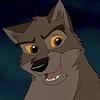You need to sign in or sign up before continuing.
Take a photo of a barcode or cover
It is rare to find an author whose every book in a series outdoes their last. Le Guin does just that in the third installment of the Earthsea Cycle. Instead of an outward focus on the world of Earthsea, the novel shifts instead to the inner struggles on mankind with their mortality. We see a once bright world filled with darkness: magic is dying, despair reigns, hope flees beyond the reaches of the seas. Yet, Ged reappears, now as Archmage, along with the young prince Arren who journey into the darkness. Though the primordial battle of light vs darkness is seen in each of book of the series, it has now surpassed all limits, going beyond the individual struggle towards the universal one. This has been a truly amazing analysis of mortality and the strength of hope!
I love le Guin. She’s restrained in her fantasy and yet so deep.
I have settled into the narrative voice and enjoy the prose, even if it is hard for me to get through. The plot lines of this series meander and the characters aren't as fleshed out as in the books I normally read. Sometimes I struggled to keep track of the plot or characters. My investment in them and the stakes in general aren't as emotionally driven. There are many transitions, some of them radical, which lost me a bit and had me going back and rereading to follow along. I can't decide if I will continue the series. So far, reading the series seems reminiscent of going to a museum vs a library: enjoying the escape provided by admiring the textures, colors and mood vs a strong pull of the story being told.
adventurous
dark
mysterious
reflective
slow-paced
Plot or Character Driven:
Plot
Strong character development:
Yes
Loveable characters:
Yes
Diverse cast of characters:
Yes
Flaws of characters a main focus:
Yes
adventurous
challenging
emotional
inspiring
reflective
medium-paced
This book outdoes the other two before it in its discussions of the beauty of life and the complexity of death. What a great trilogy.
No female characters. There is at most one conversation including a female. Any number of characters could have been female & the story could have played out exactly the same, including the main character Prince Arren. Even the dragons were all male, or at most "male or female, there was no telling."
For a book written for children - perhaps a young adult audience - this sure is a bleak book. It's also a deeply philosophical book, as well as having a great deal of adventure and learning about life. It's the most Tao book of Le Guin's Earthsea series. It's an odd book to come after The Tombs of Atuan, as that was after A Wizard of Earthsea; the pace is so different. I think Wizard must come first but for these two the order is irrelevant. It's also back to bring an almost exclusively male narrative.
I know young adult books are often bleak; we have a rash of dystopian novels to prove that. But in roughly 170 pages Le Guin explores the consequences of rushing off after life at the expense of losing life; of fearing death so much that you give up on life; and the sheer loss of hope, and what that might do to society. Somehow the fact that Le Guin does it so quickly makes it seem more bleak. Like the first book, A Wizard of Earthsea, this book is about one quest, one search for one man. Instead of taking an entire trilogy, with lots of disappointments and setbacks and newfound friends, Le Guin has Sparrowhawk, now with a new young friend, simply track that man down. Of course it's not really a case of doing anything "simply". There are set backs. The book does show us more of Earthsea and its environs, and we meet a variety of different people; but everything is designed to assist in the one quest. And as I said before, it is only 170 pages. Le Guin's words are evocative and precise. There is glorious description, but it doesn't go on forever. Characters are swiftly sketched. Swiftly, and brilliantly. The story is as driven towards its conclusion as Sparrowhawk is towards his.
We always knew that Sparrowhawk would turn out to be the archmage. We were told that in the first book. And here he is, Archmage for five years, now being confronted by something strange going on to the south and to the west of the Inner Lands. Unsurprisingly Sparrowhawk is feeling confined by the walls and the tasks and the requirements of being archmage. It's not clear how long after the events of the previous books this is happening. And in some ways, as the book reminds us, it doesn't really matter. Sparrowhawk has had a long and distinguished and occasionally difficult career as a sorcerer. Many of those deeds get recorded in the songs made about him at some point in the future. This is another one to add to his long list. Of course, he is not the only – and perhaps not even the main – protagonist of this book. He is joined by a young prince, perhaps just slightly older than Sparrowhawk himself was in A Wizard of Earthsea. It's therefore a coming-of-age story for young Arren, as that book was for Sparrowhawk. Not that Sparrowhawk doesn't have a lot to learn: about himself and about his world and about what must be done.
Life and honour and death and hope and love and fear. What more could an author hope to explore?
I know young adult books are often bleak; we have a rash of dystopian novels to prove that. But in roughly 170 pages Le Guin explores the consequences of rushing off after life at the expense of losing life; of fearing death so much that you give up on life; and the sheer loss of hope, and what that might do to society. Somehow the fact that Le Guin does it so quickly makes it seem more bleak. Like the first book, A Wizard of Earthsea, this book is about one quest, one search for one man. Instead of taking an entire trilogy, with lots of disappointments and setbacks and newfound friends, Le Guin has Sparrowhawk, now with a new young friend, simply track that man down. Of course it's not really a case of doing anything "simply". There are set backs. The book does show us more of Earthsea and its environs, and we meet a variety of different people; but everything is designed to assist in the one quest. And as I said before, it is only 170 pages. Le Guin's words are evocative and precise. There is glorious description, but it doesn't go on forever. Characters are swiftly sketched. Swiftly, and brilliantly. The story is as driven towards its conclusion as Sparrowhawk is towards his.
We always knew that Sparrowhawk would turn out to be the archmage. We were told that in the first book. And here he is, Archmage for five years, now being confronted by something strange going on to the south and to the west of the Inner Lands. Unsurprisingly Sparrowhawk is feeling confined by the walls and the tasks and the requirements of being archmage. It's not clear how long after the events of the previous books this is happening. And in some ways, as the book reminds us, it doesn't really matter. Sparrowhawk has had a long and distinguished and occasionally difficult career as a sorcerer. Many of those deeds get recorded in the songs made about him at some point in the future. This is another one to add to his long list. Of course, he is not the only – and perhaps not even the main – protagonist of this book. He is joined by a young prince, perhaps just slightly older than Sparrowhawk himself was in A Wizard of Earthsea. It's therefore a coming-of-age story for young Arren, as that book was for Sparrowhawk. Not that Sparrowhawk doesn't have a lot to learn: about himself and about his world and about what must be done.
Life and honour and death and hope and love and fear. What more could an author hope to explore?





